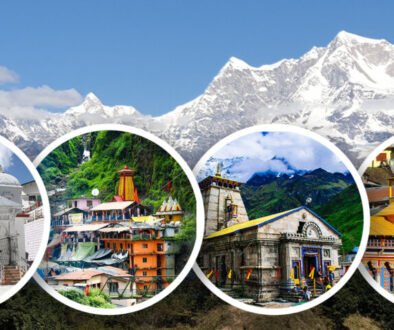Trekking to Annapurna Base Camp: A Journey to the Heart of the Himalayas
Introduction:
Nestled amidst the towering peaks of the Himalayas, the Annapurna Base Camp trek is a breathtaking adventure that takes you into the heart of Nepal’s stunning natural beauty. This awe-inspiring journey is a favorite among trekkers and adventurers from around the world, offering a unique blend of challenging trails, diverse landscapes, and a rich cultural experience. In this article, we will explore the wonders of the Annapurna Base Camp trek, from its scenic beauty to the cultural encounters that make it an unforgettable adventure.
The Path Less Traveled
The Annapurna Base Camp trek, often abbreviated as the ABC trek, takes you on a 10 to 14-day journey through the Annapurna Conservation Area, one of the most biodiverse regions in Nepal. This conservation area is home to an incredible variety of flora and fauna, including rare and endangered species. As you embark on this trek, you’ll traverse lush forests, cross pristine rivers, and trek through picturesque terraced fields that cling to the steep mountainsides.
The trailhead for this iconic trek is typically Nayapul, a small town near the city of Pokhara in western Nepal. From Nayapul, you’ll gradually ascend, passing through charming villages like Ghandruk and Chhomrong. These villages offer a glimpse into the traditional Gurung and Magar cultures, with their warm hospitality and unique way of life.
Panoramic Views at Every Turn
One of the main attractions of the Annapurna Base Camp trek is the ever-changing landscape and breathtaking vistas. As you ascend higher, you’ll witness the majestic Annapurna Massif come into view. The dramatic peaks of Annapurna I (8,091 meters) and Machapuchare (6,993 meters) will leave you spellbound. The sunrises and sunsets in this region are particularly enchanting, casting a warm glow over the mountains and creating a serene atmosphere that soothes the soul.
Along the way, you’ll also encounter lush rhododendron forests, bamboo groves, and alpine meadows. Depending on the season of your trek, these forests may burst into vibrant colors during spring with rhododendron blooms, making the journey even more magical.
Challenges and Rewards
The Annapurna Base Camp trek is not without its challenges. The trail includes steep ascents and descents, rocky terrain, and potentially unpredictable weather. Trekkers should be physically prepared and mentally determined to tackle these obstacles. However, with the right preparation and a sense of adventure, the rewards far outweigh the challenges.
Reaching Annapurna Base Camp, at an altitude of 4,130 meters, is a momentous achievement. The sense of accomplishment you’ll feel as you stand amidst the colossal peaks is indescribable. The Annapurna Sanctuary, a cirque-like valley surrounded by these towering peaks, is the ultimate destination. The serene glacial basin is a place of profound natural beauty and tranquility, offering a stark contrast to the rugged terrain you’ve traversed to get there.
Cultural Encounters and Hospitality
As you trek through the remote villages along the route, you’ll have the opportunity to interact with the local communities. The Gurung and Magar people, renowned for their warmth and hospitality, welcome trekkers into their homes and teahouses. This cultural exchange adds a unique dimension to the Annapurna Base Camp trek, allowing you to gain insight into the traditional lifestyle, cuisine, and customs of the region.
Teahouses along the trail provide trekkers with comfortable lodging and hearty meals, offering a chance to refuel and rest while enjoying the local fare. The sense of community that prevails in these mountain villages is truly heartwarming and adds a deeper layer of meaning to the trek.
Best Time to Trek
The ideal time to undertake the Annapurna Base Camp trek depends on your preferences and weather conditions. Spring (March to May) and autumn (September to November) are considered the best seasons. During these months, the weather is relatively stable, and the skies are usually clear, offering the best views of the mountains.
In the spring, the rhododendron blooms create a vibrant landscape, while autumn showcases the clear, crisp mountain views. Winter (December to February) can be challenging due to cold temperatures and snowfall, while the monsoon season (June to August) brings heavy rains and the risk of landslides.
Final Thoughts
The Annapurna Base Camp trek is a remarkable journey that combines natural beauty, cultural richness, and physical challenges. It’s an experience that leaves an indelible mark on those who undertake it, making it a must-visit destination for trekkers and adventurers. The opportunity to stand in the shadow of the world’s most iconic mountains, surrounded by the warmth of Nepali hospitality, is an experience that will stay with you for a lifetime. So, lace up your hiking boots, pack your backpack, and embark on a trek to Annapurna Base Camp for an adventure of a lifetime in the heart of the Himalayas.
for more.


